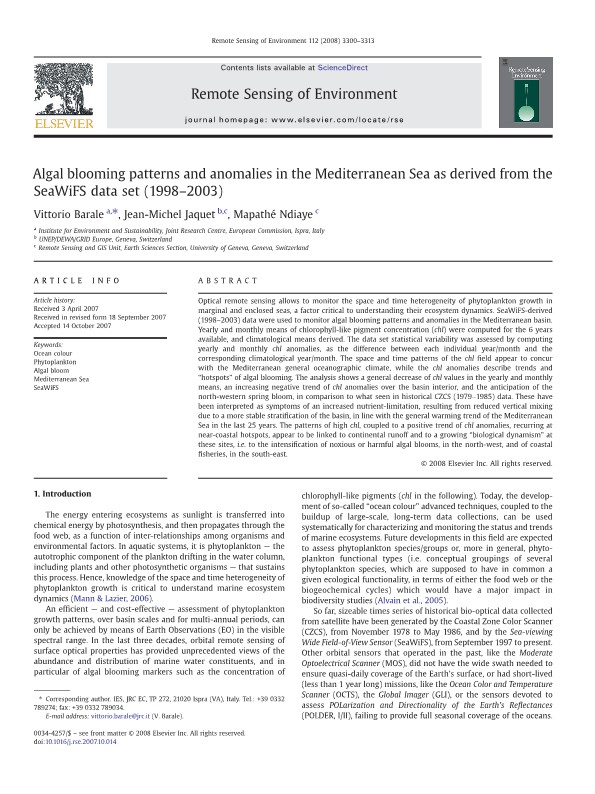Resource
Algal blooming patterns and anomalies in the Mediterranean Sea as derived from the SeaWiFS data set (1998–2003)
Description
Optical remote sensing allows to monitor the space and time heterogeneity of phytoplankton growth in marginal and enclosed seas, a factor critical to understanding their ecosystem dynamics. SeaWiFS-derived (1998–2003) data were used to monitor algal blooming patterns and anomalies in the Mediterranean basin. Yearly and monthly means of chlorophyll-like pigment concentration (chl) were computed for the 6 years available, and climatological means derived. The data set statistical variability was assessed by computing yearly and monthly chl anomalies, as the difference between each individual year/month and the corresponding climatological year/month. The space and time patterns of the chl field appear to concur with the Mediterranean general oceanographic climate, while the chl anomalies describe trends and “hotspots” of algal blooming. The analysis shows a general decrease of chl values in the yearly and monthly means, an increasing negative trend of chl anomalies over the basin interior, and the anticipation of the north-western spring bloom, in comparison to what seen in historical CZCS (1979–1985) data. These have been interpreted as symptoms of an increased nutrient-limitation, resulting from reduced vertical mixing due to a more stable stratification of the basin, in line with the general warming trend of the Mediterranean Sea in the last 25 years. The patterns of high chl, coupled to a positive trend of chl anomalies, recurring at near-coastal hotspots, appear to be linked to continental runoff and to a growing “biological dynamism” at these sites, i.e. to the intensification of noxious or harmful algal blooms, in the north-west, and of coastal fisheries, in the south-east.